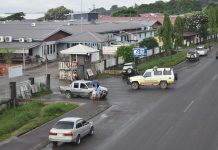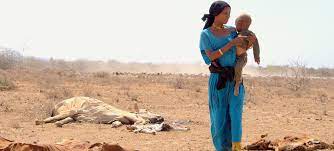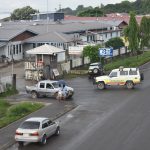Humanity is “at a crossroads” when it comes to managing drought and accelerating ways of slowing it down must happen “urgently, using every tool we can”, said the head of the UN Convention to Combat Desertification (UNCCD) on Thursday, calling for a global commitment to support drought preparedness and resilience.
Through its newly published Drought in Numbers report, released in Abidjan, Côte d’Ivoire, during the 15th Conference of Parties (COP15), UNCCD’s compendium of drought-related information and data is helping inform negotiations for the final outcomes of the conference when it closes on 20 May.
UNCCD Executive Secretary Ibrahim Thiaw, said that the “facts and figures of this publication all point in the same direction: An upward trajectory in the duration of droughts and the severity of impacts, not only affecting human societies but also the ecological systems upon which the survival of all life depends, including that of our own species”.
The report reveals that from 1970 to 2019, weather, climate and water hazards, accounted for 50 percent of disasters and 45 per cent of disaster-related deaths, mostly in developing countries.
Moreover, while droughts represented 15 per cent of natural disasters, they accounted for approximately 650,000 deaths throughout that period.
And from 1998 to 2017, droughts triggered global economic losses of roughly US$124 billion – a number and duration of which have risen 29 per cent since 2000.
Meanwhile in 2022, more than 2.3 billion people are facing water stress and almost 160 million children are exposed to severe and prolonged droughts.
Droughts have deep, widespread and underestimated impacts on societies, ecosystems, and economies, having impacted some 1.4 billion people between 2000 and 2019.
Second only to flooding, droughts inflict the greatest suffering on women and girls in developing countries, in terms of education, nutrition, health, sanitation, and safety.
The publication explains that 72 percent of women and nine per cent of girls are burdened with collecting water, in some cases spending as much as 40 per cent of their calorific intake carrying it.
Drought in numbers paints a grim picture surrounding ecosystems as well, noting that the percentage of plants affected by drought has more than doubled in the last 40 years – with about 12 million hectares of land lost each year to drought and desertification.
Meanwhile, they are becoming increasingly common in the vast Amazon region, which has suffered three widespread droughts that triggered massive forest fires throughout the first two decades of this century.
If Amazonian deforestation continues unabated, 16 per cent of the region’s remaining forests will likely burn by 2050, warned the report.
And in Europe, photosynthesis was reduced by 30 percent during a 2003 summer drought there.
In the past century, more than 10 million people died due to major drought events, which also generated several hundred billion dollars in economic losses worldwide. And the numbers are rising.
While severe drought affects Africa more than any other continent – accounting for 44 percent of the global total – over the past century, 45 major drought events have also affected millions of people in Europe – affecting an average of 15 per cent of that continent’s land and 17 per cent of its population.
In the United States, drought-induced crop failures and other economic losses have totalled US$249 billion since 1980 alone, and over the past century, Asia was the continent with the highest total number of humans affected by drought.
“One of the best, most comprehensive solutions is land restoration, which addresses many of the underlying factors of degraded water cycles and the loss of soil fertility,” Thiaw said.
“We must build and rebuild our landscapes better, mimicking nature wherever possible and creating functional ecological systems”.
Beyond restoration, there needs to be a paradigm shift from ‘reactive’ and ‘crisis-based’ approaches to ‘proactive’ and ‘risk-based’ drought management approaches involving coordination, communication and cooperation, driven by sufficient finance and political will, he added.
Climate change is expected to increase the risk of droughts in many vulnerable regions of the world, particularly those with rapid population growth, vulnerable populations and challenges with food security, according to the report.
Within the next few decades, 129 countries will experience an increase in drought – 23 primarily due to population growth and 38 because of their interaction between climate change and population growth.
And should global warming reach 3℃ by 2100, drought losses could be five times higher than they are today, with the largest increase in the Mediterranean and the Atlantic regions of Europe.
Sustainable and efficient agricultural management techniques are needed to grow more food on less land and with less water, and humans must change their relationships with food, fodder and fiber – moving toward plant-based diets and stemming the consumption of animals, according to the brief.
Moving in the right direction requires concerted policy and partnerships at all levels along with integrated drought action plans.
Early-warning systems that work across boundaries, new technologies to guide decisions with precision and sustainable funding to improve drought resilience at the local level are also key actions.
SOURCE: UN NEWS CENTRE/PACNEWS


















